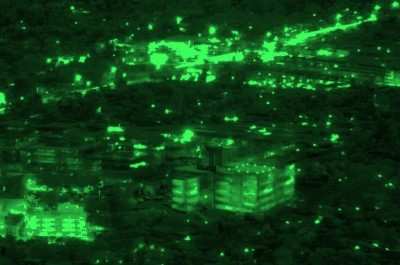Tue, Oct 27, 2009
Night Flight Concepts Offers Training In A Wide Variety Of
Scenarios
 Night Flight Concepts (NFC) has
developed a state-of-the-art night vision goggle (NVG) crewmember
training program, the core of which is the Night Readiness Virtual
Terrain Board (VTB) Training System. The NVG Crewmember
Training Program and VTB Training System are being offered as part
of Night Flight Concept's "Turn Green…Turn Key" training
solution package.
Night Flight Concepts (NFC) has
developed a state-of-the-art night vision goggle (NVG) crewmember
training program, the core of which is the Night Readiness Virtual
Terrain Board (VTB) Training System. The NVG Crewmember
Training Program and VTB Training System are being offered as part
of Night Flight Concept's "Turn Green…Turn Key" training
solution package.
The VTB Training System is a NVG simulation platform for training
the capabilities and limitations of NVGs. The VTB is intended to be
a major component of any overall NVG training program. It provides
an immersive environment where the student views a normal unaided
night scene in a blacked out classroom. When viewed through NVGs,
the same scene will be an extremely high definition, true
physics-based NVG representation.
The VTB creates the various NVG attributes that are generally
included in NVG course training objectives such as:
- Effects of Various Illumination Levels on Image Quality.
- Appearance of Power Lines / Estimating Distance to Point Light
Sources.
- Effects of different atmospheric obscurants, such as rain,
snow, and dust.
The VTB Training System, in addition to extremely high fidelity
rendering of the NVG environment, features slew and zoom capability
(version 2.0) or a "fly-through" mode at different altitudes
(version 3.0). Numerous types of moving models and special
effects are being requested by operators and are currently in
development. These include, but are not limited to:
- Moving vehicles over various terrains such as ambulances and
police patrol vehicles.
- Ships, Oil Platforms and reflections in various sea
states.
- Weather effects and inadvertent entry into IMC.
- Laser effects on the Aircrew.
- Customized scenes for EMS operators such as hospital helipads
and scene landings.

The various features can be grouped and sequenced to form
training modules to fit various customer training programs. The VTB
Training System uses basic core training modules based on civilian
Night Vision Goggle Training Course curriculum, which is based on
the typical emergency medical/rescue service operator flight
profiles.
More News
Takeoff Roll The process whereby an aircraft is aligned with the runway centerline and the aircraft is moving with the intent to take off. For helicopters, this pertains to the act>[...]
“We’re proud of the hard work that went into receiving this validation, and it will be a welcome relief to our customers in the European Union. We couldn’t be mor>[...]
"Aircraft Spruce is pleased to announce the acquisition of the parts distribution operations of Wag-Aero. Wag-Aero was founded in the 1960’s by Dick and Bobbie Wagner in the >[...]
IDENT Feature The special feature in the Air Traffic Control Radar Beacon System (ATCRBS) equipment. It is used to immediately distinguish one displayed beacon target from other be>[...]
Aero Linx: Pararescue Air Force Pararescuemen, also known as PJs, are the only DoD elite combat forces specifically organized, trained, equipped, and postured to conduct full spect>[...]
 ANN's Daily Aero-Term (05.10.24): Takeoff Roll
ANN's Daily Aero-Term (05.10.24): Takeoff Roll Aero-News: Quote of the Day (05.10.24)
Aero-News: Quote of the Day (05.10.24) Aero-News: Quote of the Day (05.11.24)
Aero-News: Quote of the Day (05.11.24) ANN's Daily Aero-Term (05.11.24): IDENT Feature
ANN's Daily Aero-Term (05.11.24): IDENT Feature ANN's Daily Aero-Linx (05.11.24)
ANN's Daily Aero-Linx (05.11.24)




